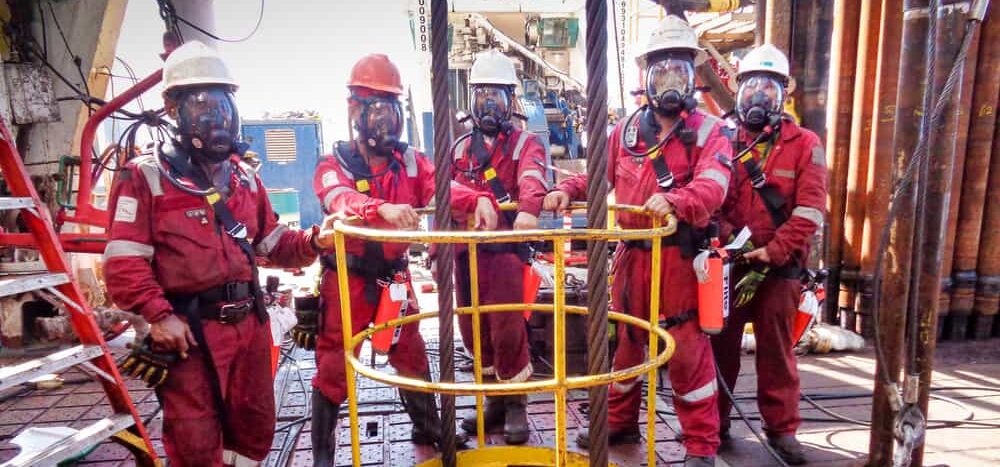
You’ve likely heard of H2S Alive training, but do you know what it entails and why it’s crucial in certain industries? As you venture into environments where hydrogen sulfide is present, you’re taking a significant risk if you’re not properly trained. This toxic gas can cause severe health issues, even death, and it’s essential to understand how to detect it, respond to emergencies, and rescue those in need. But what exactly does this training cover, and which industries require it? Let’s explore the ins and outs of H2S Alive training and why it’s a matter of life and death.
What Is H2S Alive Training?
You’re about to enter an environment where hydrogen sulfide (H2S) is present, a toxic and highly flammable gas that can be deadly in high concentrations.
That’s why you need H2S Alive training, a course designed to teach you how to work safely in areas where H2S is present. This training program is essential for anyone working in the oil and gas industry, as well as other industries where H2S may be encountered.
H2S Alive training is a comprehensive program that covers the physical properties and health hazards of H2S.
You’ll learn how to detect H2S, respond to H2S emergencies, and use respiratory protection equipment. The training also covers rescue techniques and first aid procedures for H2S exposure.
By the end of the course, you’ll be able to identify H2S hazards, take necessary precautions, and respond effectively in case of an emergency.
With H2S Alive training, you’ll be better equipped to protect yourself and others from the dangers of H2S.
Risks of H2S Exposure in Industry
Exposure to hydrogen sulfide in industrial settings poses significant risks to workers’ health and safety.
You’re likely to encounter H2S in oil and gas operations, wastewater treatment facilities, and other industries where organic matter breaks down.
Even brief exposure to low concentrations of H2S can cause respiratory problems, headaches, and dizziness.
Prolonged exposure or higher concentrations can lead to more severe health effects, including coma, convulsions, and even death.
You’re not just at risk from inhalation either.
H2S can also contaminate soil and water, posing environmental hazards.
If you’re working in an area where H2S is present, you need to be aware of the risks and take necessary precautions.
Failure to do so can have devastating consequences, not just for you, but for your coworkers and the environment as well.
It’s crucial that you understand the risks associated with H2S exposure and take steps to mitigate them.
Key Components of H2S Alive Training
H2S Alive training is a comprehensive program that equips workers with the knowledge and skills necessary to safely handle hydrogen sulfide emergencies.
You’ll learn about the physical and chemical properties of H2S, its hazards, and the risks associated with exposure. This foundation is crucial in understanding how to respond to H2S-related incidents.
The training also covers the proper use of respiratory protective equipment, such as self-contained breathing apparatuses (SCBAs) and air-purifying respirators (APRs).
You’ll learn how to operate these devices, perform pre-use checks, and maintain them properly. Additionally, you’ll be taught how to respond to H2S releases, including how to evacuate the area, use gas detection instruments, and follow emergency procedures.
The program also emphasizes the importance of rescue and first aid techniques, including cardiopulmonary resuscitation (CPR) and the use of automated external defibrillators (AEDs).
Industries That Require H2S Alive
Various industries mandate H2S Alive training to ensure workers can respond effectively to hydrogen sulfide emergencies.
You’ll find that oil and gas companies, in particular, require their employees to undergo this training. This is because hydrogen sulfide is a common byproduct of crude oil and natural gas production. Workers in these industries are at high risk of exposure to H2S, which can be deadly in high concentrations.
You’ll also need H2S Alive training if you work in industries that involve drilling, well servicing, or pipeline operations.
In addition, workers in the mining industry, particularly those involved in coal or metal mining, may require this training.
Some construction projects, like those involving excavation or trenching, may also require H2S Alive certification.
Even some agricultural workers, like those involved in manure handling or livestock operations, may need this training.
Benefits of H2S Alive Certification
By understanding the industries that require H2S Alive training, you can appreciate the importance of obtaining this certification.
With H2S Alive certification, you’ll gain a competitive edge in the job market, as many employers in the oil and gas, construction, and other industries require it. This certification demonstrates your ability to work safely in environments where hydrogen sulfide is present, making you a more attractive candidate.
You’ll also benefit from increased confidence and awareness when working with H2S.
The h2s alive calgary teaches you how to detect and respond to H2S emergencies, which can be lifesaving. Additionally, having H2S Alive certification shows that you’re committed to safety, which can lead to better job opportunities and career advancement.
Furthermore, H2S Alive certification is often a requirement for working on certain projects or sites.
Conclusion
You’ve now learned the importance of H2S Alive training and its role in keeping you and your coworkers safe on the job. By taking this course, you’ll be empowered to identify hazards, respond to emergencies, and prevent devastating consequences. Don’t wait – get certified today and take the first step towards a safer, healthier work environment. Your life, and the lives of those around you, depend on it.
